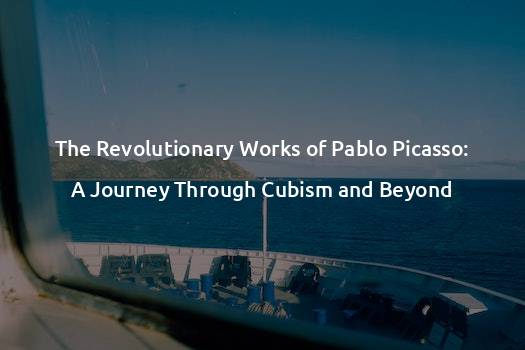The Revolutionary Works of Pablo Picasso: A Journey Through Cubism and Beyond
The Revolutionary Works of Pablo Picasso: A Journey Through Cubism and Beyond
Pablo Picasso, the Spanish artist, is widely regarded as one of the most influential figures in the art world. Not only did his work redefine the boundaries of artistic expression, but it also revolutionized the way we perceive and interpret art. Picasso’s innovative approach, particularly through the development of Cubism, challenged traditional artistic conventions and opened new avenues of creative exploration.
The Emergence of Cubism
Picasso’s revolutionary journey began in the early 20th century when he, along with Georges Braque, pioneered the Cubist movement. Cubism sought to depict multiple viewpoints of an object or subject simultaneously, breaking away from the traditional practice of representing objects in a realistic manner. This shift in perspective allowed artists to represent objects in a more abstract and fragmented way, giving rise to a new visual language.
Picasso’s groundbreaking painting, “Les Demoiselles d’Avignon” (1907), marked a significant turning point in the development of Cubism. The composition portrays five female figures in a brothel, depicted with sharp geometric shapes and distorted forms. It challenged the norms of representation at the time and established Picasso as a leading figure in the avant-garde art movement.
An Analytical Approach
As Cubism evolved, Picasso, along with Braque, delved deeper into the exploration of form and space. This led to the development of Analytical Cubism, characterized by the deconstruction of objects into their fundamental geometric elements. Picasso’s Analytical Cubist works, such as “Ma Jolie” (1911-1912), resembled fragmented puzzles pieced together to create a cohesive whole. This approach invited viewers to engage with the artwork on a deeper level, as they had to decipher the fragmented elements and reconstruct the subject in their minds.
The Synthetic Phase
In the later stages of Cubism, Picasso embarked on a new phase known as Synthetic Cubism. In this period, he introduced collages and assemblages, incorporating various materials such as newspaper clippings, wallpaper, and everyday objects into his compositions. Picasso’s most renowned work from this phase is “Still Life with Chair Caning” (1912), which depicted a chair with caning using both painted and real elements. This groundbreaking approach shattered the boundaries between art and everyday objects, challenging the very definition of what constitutes a work of art.
Beyond Cubism
Picasso’s artistic journey extended far beyond the confines of Cubism. His restless experimentation with form, color, and style led him to explore various artistic movements and genres throughout his career.
In the early 1920s, Picasso embarked on his Neo-Classical phase, where he revisited classical themes and embraced a more traditional style. This marked a significant departure from his earlier avant-garde experimentation, reflecting his desire to reconnect with the artistic traditions of the past.
Later, Picasso delved into Surrealism, a movement characterized by dream-like and irrational imagery. His masterpiece “Guernica” (1937) is a haunting depiction of the horrors of war, conveying intense emotions through distorted and fragmented forms. This powerful painting solidified Picasso’s status as a visionary artist capable of capturing the human experience in the most profound and thought-provoking ways.
The Legacy of Picasso
Picasso’s revolutionary works continue to inspire artists around the world and challenge traditional notions of art. His bold experimentation with form, perspective, and materials left an indelible mark on the trajectory of modern and contemporary art.
By pushing the boundaries of artistic expression, Picasso opened new avenues for creative exploration and paved the way for future generations of artists. His revolutionary approach to art continues to resonate with audiences today, reminding us of the power of artistic innovation and the limitless potential of human creativity.
TLDR;
Picasso’s revolutionary journey in art began with the emergence of Cubism, challenging traditional artistic conventions and paving the way for abstract and fragmented representations. Analytical Cubism further delved into the exploration of form and space through fragmented elements, while Synthetic Cubism introduced collages and assemblages. Picasso’s artistic journey extended beyond Cubism, encompassing Neo-Classicism and Surrealism, leaving an indelible mark on the art world and inspiring future generations of artists.







